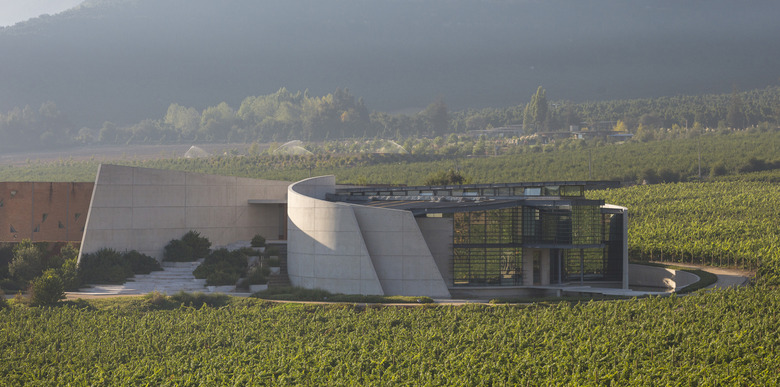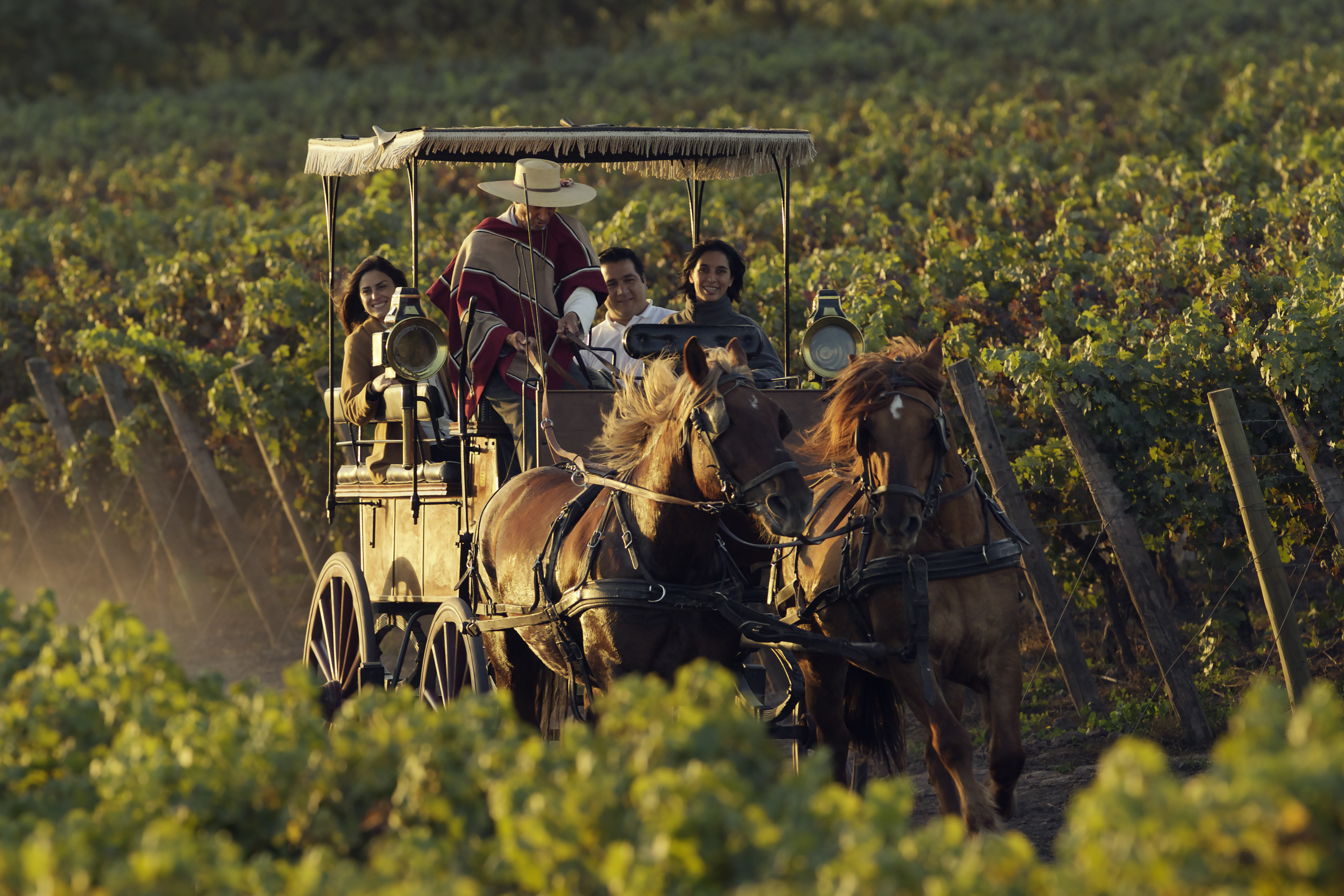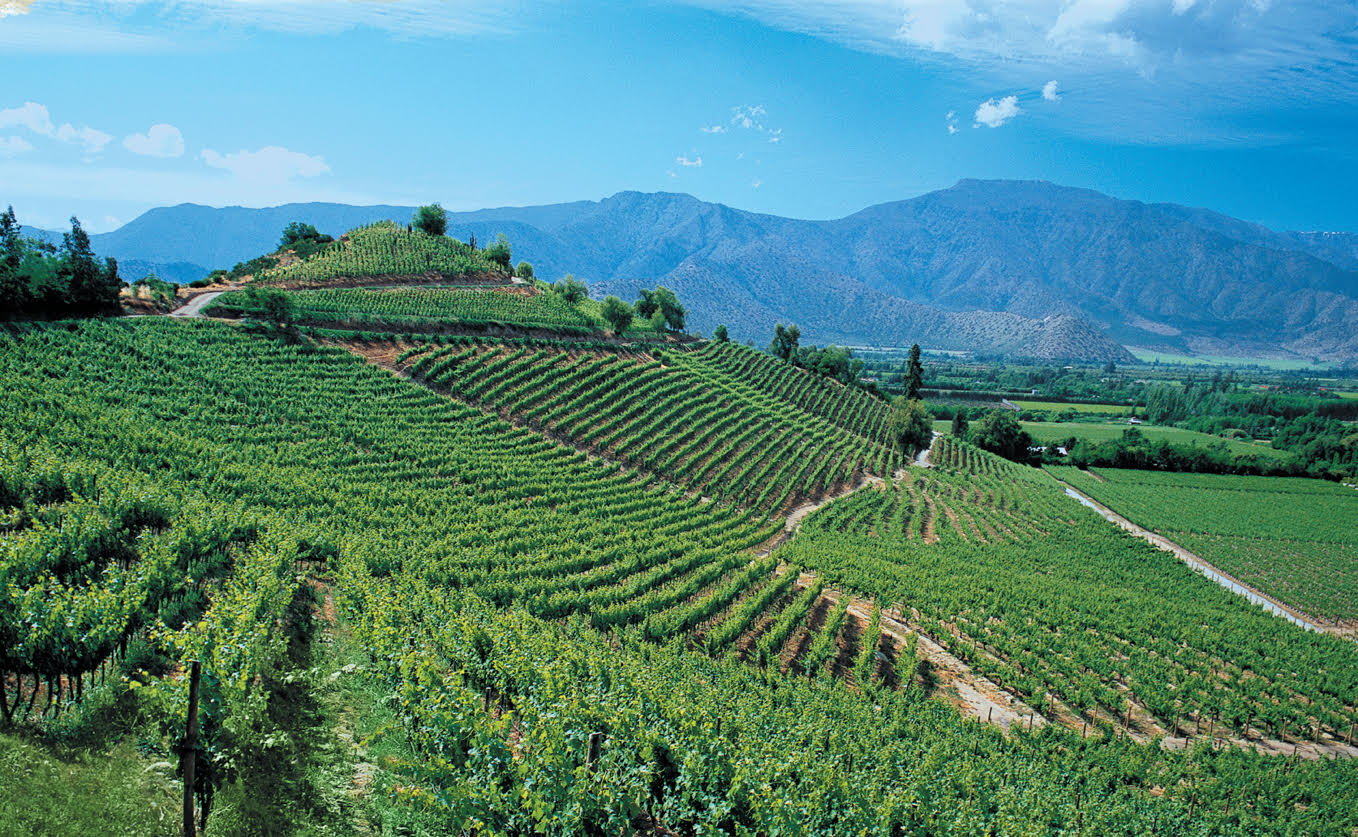Touring The Wine Country Of Chile
South of the equator and hanging on the edge of the world, Chilean vineyards roll down from the foothills of the majestic, snow-capped Andes mountains all the way to the extensive jagged Pacific coastline. Chile is blessed with a Mediterranean climate and a longstanding agricultural tradition that is now shifting towards sustainable and biodynamic farming practices. Chilean vineyards are producing high-quality wines that reflect their terroir, creating a buzz in the international wine community and showing up in the finest restaurants around the world. A wine exploration with the opportunity to taste and experience Chilean wines is best planned during harvesting time from March until May or during the growing season from October to late January.
While the major wine producing regions are within a day's trip from the capital city of Santiago, the recent spurt of high-end hotels in the wine country with gastronomic restaurants onsite provides an option to stay and not just experience the wines but relax in these architectural and design wonders. The principal wine regions, all within a one-day radius from Santiago, produce varietals like cabernet sauvignon, sauvignon blanc, pinot noir, the ubiquitous carménère and also smaller quantities of petit verdot, pais, and the carignan. The Wine Route — a stretch of highway that winds through the five major wine valleys, nestled between the flanges of the mountains with scenic vistas around every bend — provides easy access by road.
Establishing a base in the capital city of Santiago, with its wide choice of lodgings at small boutique hotels like the Aubrey or large international chain hotels at different price points, is a viable option. Sightseeing in the city is facilitated by the inexpensive subway metro that connects to the Plaza des Armas; the Costanera Norte; the Gran Torre Santiago, the tallest building in South America; the Palacio de la Moneda; and the Paseo Los Dominicos for local handicrafts. After a day's jaunt into the region's wine country, you can end the day by experiencing indigenous produce and seafood served at restaurants such as chef Rodolfo Guzman's Borago, 99 Restaurant by chef Kurt Schmidt, and scores of local eateries and bars. Most restaurants pour a varied selection of Chilean wines for a complete food and wine experience, and you might get a second taste of a wine tasted at a winery earlier in the day. Or switch to the Chilean national drink, the pisco sour.
A few wineries worth a visit in the major wine producing valleys:
Colchagua Valley:
Viu Manent
The high summer temperatures are conducive for the production of mainly the carménère, along with other varietals like cabernet sauvignon, merlot, syrah, and pinot noir reflected in the fine reds from the valley. One of the 30 plus wineries in the area, Viu Manent is a family-owned operation in the center of the Colchagua Valley, just 80 miles south of Santiago. Chief winemaker Patricio Celadon is often on hand to relate the story of the first Chilean malbec introduced by the winery in 1993 and "El Incidente," named after the real-life incident of a hot air balloon crash into the nearby Santa Cruz market. The small museum onsite has an interesting display of artifacts and family treasures reflecting the winery's storied past. After the degustation in the beautifully appointed tasting room you can hitch a ride on a horse-drawn carriage through the vineyards to the barrel rooms followed by a lazy lunch at the onsite restaurant. Opt for the wine pairings from the Gran Reserva, the Secreto, or El Incidente to accompany the Chilean fare.
Luis Felipe Edwards
This family-owned Chilean winery recently won the Best of Nation 2017 at the International Wine Competition in San Francisco. At the foot of the Andes, nestled amongst the valleys and terraced foothills, the ideal climate allows for production of the ubiquitous carménère, cabernet sauvignon, syrah, merlot, and other varietals. The stunning views from the tasting room, accessed by a bumpy ride in a four-wheel-drive with a precipitous drop below, are incomparable. Its bougainvillea-covered colonial building and antique carriage contrast with a technology-forward style to make the facility worth a visit. Try the Doña Bernarda Private Reserve, a bold red blend named after the owner's wife with her silhouette on the label.
Cachapoal Valley:
Viña Vik
Sheltered by coastal ranges from the cool winds off the Pacific lies this picturesque alluvial valley with a diversity of terroirs and micro climates. The Viña Vik facility is much more than a winery with its stunning design by architect Smiljan Radic. The boutique hotel on the premises boasts designer flourishes, an art collection, a spa, and a gastronomic restaurant offering a luxe wine country experience. The ubiquitous carménère as well as cabernet sauvignon, merlot, syrah, as well as chardonnay and sauvignon blanc, flourish in the valley's vineyards. The holistic wines are a harmonious blend of cabernet sauvignon, syrah, carménère, merlot and cabernet franc varietals.
The winery is located underground, with a fabric roof to optimize the thermal amplitude of the valley, while the artistic running water installation overhead acts as an additional cooling element. The high-end wines are as stunning as the sunlit visual of the high tech, sustainable operation. Visitors get an opportunity to make their own blends in the tasting room before the backdrop of a modernistic fresco by Eduardo Cardoza. Cocktails amidst the art collection in the formal great room precede a world-class dinner before slipping into the Frette sheets for a food-and-wine-induced stupor. After waking up to views of sunrise over the Andes, you can line up a spa visit or just hang by the pool. Plan to spend more than a night, as you might never want to leave.
Maule Valley:
VIA Wines
More than 40 percent of Chilean wineries are located in this valley, which has a broad temperature differential due to cooling nighttime breezes from the Andes. The tasting room at VIA seems to float on a lake, as it juts out into the water — making it perfect for a lazy afternoon of wine tasting while watching the swans float by. At a distant 260 kilometers from Santiago, it's not ideal for a day trip but can be combined with a visit to other wineries in the valley. San Rafael, the winery's flagship vineyard, lies at the foot of the volcano called Descabezado Grande ("Big Headless"), a landmark of the valley with its active fumaroles. It's easy to get distracted by the views while sipping the iconic Chilensis Lazuli at the extensive San Rafael Estate, where the owners live on site.
Curico Valley:
Miguel Torres
Miguel Torres vineyards cover 160 acres of the region, and the brand is sold in over 100 countries. Fair Trade-certified and promoting sustainable viticulture, winemaker Miguel Torres — whose daughter Marimar started her own winery in California — has also revived old varietals like muscat, carignan and pais. The gastronomic Curico restaurant on the premises serves a variety of Chilean dishes (if the chocolate and cheese pairings in the tasting room don't suffice). The ivy-covered barrel rooms are best visited before tasting the range of wines from sparkling to the Gobernador Pisco.
Maipo Valley:
Concha y Toros
As one of the largest producers in Latin America, this winery is a well-established international brand, and its high-end wines like Don Melchor are poured at the finest restaurants around the world. A wine tour at the winery takes visitors through the park-like gardens, a small vineyard planted with 26 varieties of grapes, the barrel rooms, and the Casillero del Diablo. The nineteenth-century legend of the winery's devils (after which the line of three premium wines is named) comes alive with sound and light effects in an underground vault during the amusement park-like tour of the winery.
Santa Rita
Santa Rita, opened in 1814, is more than a winery with its huge parks, museum, and the Doña Paula restaurant, which serves traditional Chilean cuisine under its painted wood-beamed ceiling. Accessible by metro and taxi or even via bike tour, the historical winery also offers a glimpse into the region's culture. If the fermentation cellars, the bottling plant, or the tasting at the wine bar are not interesting enough, there is also a museum displaying pre- Colombian artifacts. The wines range from the everyday drinking "120" line to the pricier Bougainville 2012 and the Casa Real 2012, a beautiful, smooth cabernet sauvignon.
Aconcagua Valley:
Errazuriz Winery
Visitors to this estate enter a long avenue defined by a water feature leading to the original structure housing the underground cellars, stately tasting room, impressive wine bar, and patio restaurant. Off in the distance a spectacular modernistic structure atop a hill houses the new Icon Winery, with its sustainable design and operation. It's worth a visit — not just for the design but for its internationally recognized wines, like Don Maximiano Founder's Reserve 2014. The tasting option of three wines (including choices from the premium wines) is the way to go.
Von Siebenthal
This much smaller operation by a Swiss winemaker started operations fairly recently in 2007 and has a distinct style that differs from other wineries with its New World perspective. If wine is a pleasure for you then you experience it in the wines like the Tatay de Cristobal, an iconic wine due to its basis of complexity. The small tasting room has a wine shop adjacent to it, and the owner and his wife are on the premises to share their passion and stories. The ruby-red Toknar has a good possibility of ending up in suitcases on the trip home.
If you don't have the time or budget to visit Chile at the moment, here are 25 of the best wine lists here in the United States for you to tour.



